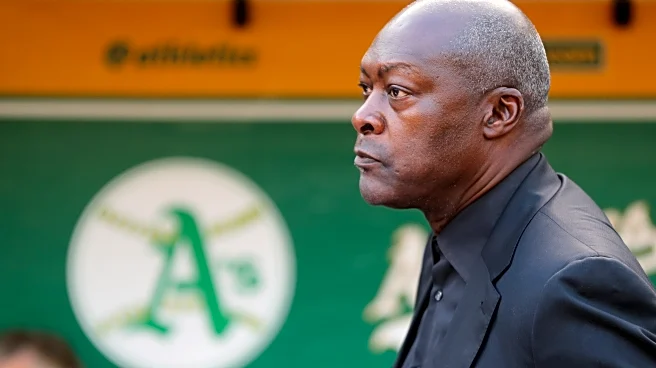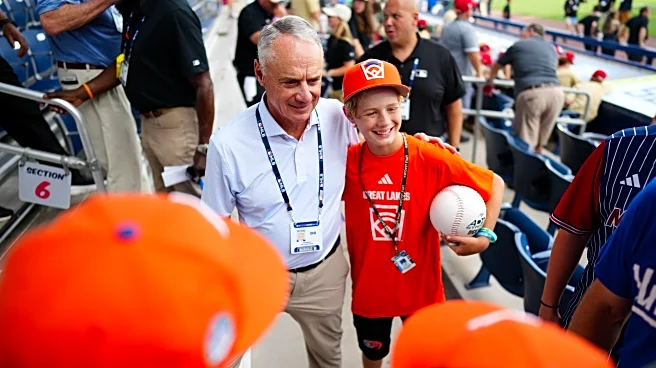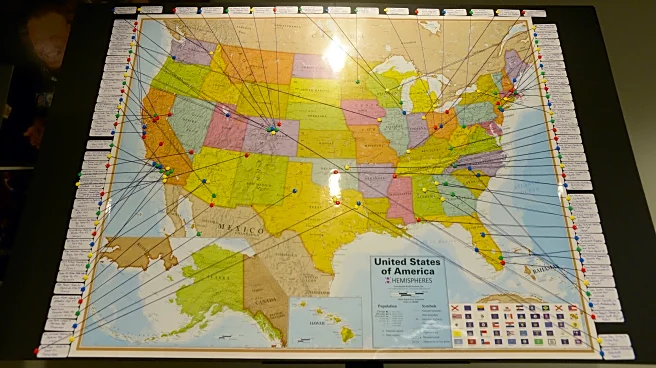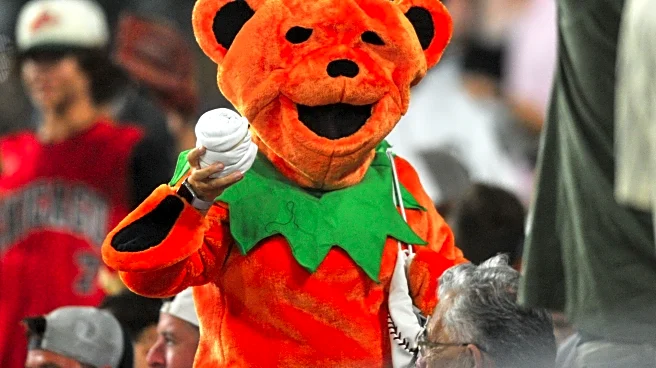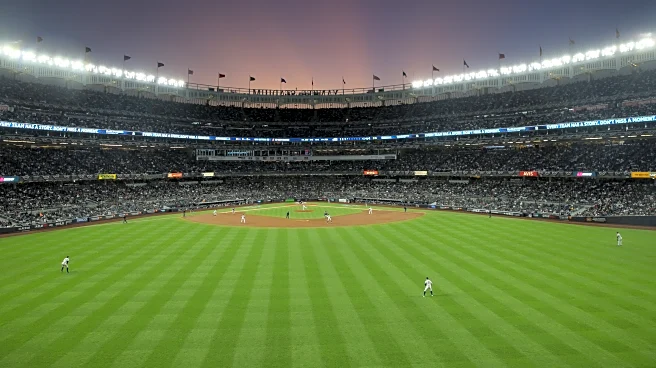
A week ago Sunday, Commissioner Rob Manfred appeared on ESPN’s Sunday Night Baseball broadcast of the Little League Classic and broached the idea of MLB expansion:
“I think if we expand, it provides us with an opportunity to geographically realign,” Manfred said. “I think we could save a lot of wear and tear on our players in terms of travel. And I think our postseason format would be even more appealing for entities like ESPN, because you’d be playing out of the east and out of the west.”
Well. First
of all, this was a bit of pandering, since Manfred pushed this as a great idea for ESPN while on an ESPN broadcast. Further, this idea comes up every so often and nothing actually happens. The last MLB expansion was in 1998 — that’s quite some time ago, 27 years, and the two before that were in 1993 and 1977. So just four teams have been added to MLB in 48 years, after going from 16 teams to 26 in a 16-year span from 1961-77.
Before I get into some personal thoughts on the items noted in the headline, I want to say that I concur with Craig Calcaterra, who posted this in his Cup of Coffee newsletter last week:
As you no doubt know, the current Collective Bargaining Agreement runs out in a little over a year. As you also know if you’ve regularly read this newsletter, Manfred is already stumping and triangulating and doing whatever he can to prepare the ground for the owners to win that negotiation. The most obvious example of this has been his tour of clubhouses in which he’s tiptoed on the line of unfair labor practices by trying to convince players that the league needs a salary cap. This follows on the comments from multiple owners over the past year about how a salary cap is essential. It’s the same basic gameplan the owners have had for over 30 years. They barely attempt to hide it anymore.
While it may not seem like it at first blush, the expansion and realignment talk is a part of that. It’s being floated now in an effort to get the public excited about it. Which, as noted above, is not hard. People eat that stuff up. Once the public is good and excited about it, Manfred and the owners will inject expansion into the Collective Bargaining Agreement talks. They will, after a year of the sorts of articles that are being churned out this week stoking public opinion, take the position that expansion is a wonderful thing and realignment is an inevitability. Manfred hopes that doing so will put the players in a position where they will feel practically obligated to agree. And yes, 52 new MLB roster spots, 80 new 40-man slots, and eight new affiliated minor league clubs is a legitimate enticement. But, in casting it as a gift to the players and fans alike, he and the owners will also demand concessions. In this case, I presume, a salary cap.
Bingo, Craig. Bingo. This is all being carefully crafted by the lawyerly Manfred to be some sort of wonderful thing for players (and fans), but in reality it’s just another negotiating tactic.
But all right, let’s play this game for a bit. Many others have done this already — and I’ve done it too, here and here and here and here and here and here and here and… well, you get the idea. (Here’s a handy StoryStream with all my articles on this topic.)
First, this isn’t going to happen until the A’s and Rays situations are complete. For this discussion, let’s assume the A’s do complete their move to Las Vegas and will begin play there in 2028. The Rays are in the process of being sold, and the new ownership group appears committed to keeping them in the Tampa Bay area — but that would require a new stadium to be built and that’s likely going to take until at least 2029.
So we are four years away from that, and maybe another year or two from expansion. Let’s say that happens in 2031. Sounds like a science fiction year, but it’s just six years from now. Still, that’s a fairly long time and many things can change in that time frame,
Also for the sake of this discussion, I am going to assume that the two expansion franchises will be granted to Nashville and Salt Lake City. Both of those cities are growing fast and have groups interested in bringing Major League Baseball there. They’ll also need stadiums to be built. Did I say 2031? Maybe 2032 is more like it. Here’s another reason Manfred’s comments are more aspirational than imminent reality.
Some of the writers opining on this topic have suggested making four divisions of eight teams out of the resulting 32-team league. Here’s why I don’t think that would work — and for that I will simply repeat Manfred’s quote from above:
“I think we could save a lot of wear and tear on our players in terms of travel.”
And indeed, that’s a good idea. But if you are going to put teams in divisions of eight, two things necessarily follow:
- Mush together AL and NL teams, and/or
- Have less divisional play
The latter would be because if the league did have four divisions of eight, you either have the AL/NL mashup to stay “regional,” or you wind up with teams in different time zones sharing the same division.
I am one of those people who think there is value in the 125 years of National League/American League shared history, even if interleague play has intermixed those over the last three decades and the league really is “Major League Baseball,” with the word “League” on the NL and AL largely by historical accident. Nevertheless, I would like to see at least some semblance of that history retained, and with it some ancient rivalries that matter to fans. When the league did the “all 30 teams” schedule a couple of years ago, it meant fewer Cubs/Cardinals, Yankees/Red Sox and Giants/Dodgers games. Why is that good? (Hint: It’s not.)
So here’s how I would split up the teams into geographically compact divisions which would help out Manfred’s desire to have less travel. (Why do I hear echoes of Bud Selig’s concern about “hotel rooms” here?) Two existing teams would have to change “leagues” here, though both are expansion teams with shorter histories (Rays, Rockies).
NL East: Mets, Pirates, Phillies, Nationals
NL Central: Cubs, Brewers, Cardinals, Reds
NL South: Braves, Marlins, Rays, Nashville
NL West: Diamondbacks, Dodgers, Giants, Padres
AL East: Red Sox, Yankees, Orioles, Blue Jays
AL Central: White Sox, Tigers, Twins, Guardians
AL South: Royals, Rockies, Astros, Rangers
AL West: Athletics, Mariners, Angels, Salt Lake City
All of these divisions are such that there’s no more than about a two and a half hour flight between any of the cities. Three of the eight (both East, and the NL West, and yes, the D-backs are essentially on the same time as California during the baseball season) are within a single time zone and none has more than two time zones within. Lastly, it keeps existing league and divisional rivalries intact while creating some new divisional rivalries (Pirates/Phillies, Rays/Marlins). I believe that matters to many fans. It certainly does matter to me.
With a 32-team MLB, you are going to have a 16-team postseason. I know, I know, most of you think there are too many playoff teams already. But the postseason is where the league makes its big TV money and this is pretty much guaranteed to happen. With eight divisions of four, you could have the top two in each division in the postseason and true “divisional” playoffs.
Along with an expanded postseason, I can almost guarantee you that the 162-game season would be toast. To accommodate expanded playoffs, a week would have to come off the regular season so we aren’t playing the World Series in mid-November.
Jayson Stark addressed this in a recent article in The Athletic, writing that 156 games would be the likely number of games in this sort of format, split this way:
12 games apiece versus the other three teams inside the division. That’s 36 games.
Six games apiece versus the other 12 teams in your league. That’s 72 games.
Are you adding along at home? No need. That gets us to 108 games. Where do the last 48 games come from?
Three games apiece versus the 16 teams in the other league. Now we’re at 156. Bingo.
There is one other reason that 156 games would work. There’s a basic scheduling principle to keep in mind.
The ideal schedule is arguably two series a week for 26 weeks, so 52 total. And if there are 32 teams, that creates perfect 156-game schedule math, of 52 times three. (In other words, that’s two three-game series a week.)
The last paragraph there is also important. Every team would then play two three-game series every week, with an off day every week. This would help with keeping players rested and make for easier travel. A schedule like that would continue existing rivalries, as well as keep league matchups that are traditional, while also still allowing games against all 31 other teams every year.
The only possible glitch here is about tiebreakers, since there’s an even number of games between all league teams in that setup. In that case baseball would have to go to tiebreakers other than head-to-head if the two teams involved are tied 6-6 at the end of the year. But… that’s basically how it’s done now anyway.
Well, there they are, this year’s thoughts and comments about possible MLB expansion, realignment and scheduling. As I said, we could be six or seven years away from anything like this, so don’t sweat it any time soon.
As always, we await developments.


